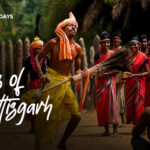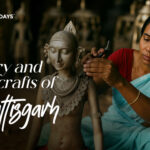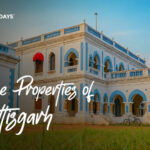- Home
- INDIA
- Offbeat India
- International
- Theme Tours
- Blogs
- Case Studies
- Plan Your Trip
Ladakh
Ladakh Tour Packages
Ladakh Tour
The Majestic Heights of Ladakh
Ladakh, or La-dvags as it is known in Tibetan, is the ‘land of high passes’ and that has always been its biggest draw for tourists. A land known for its monasteries, mountain peaks, adventure, and thrills, it calls out to the adrenaline seeker within us and becomes a destination that deserves a pilgrimage at least once in a lifetime. Come summer or winter, Ladakh tourism is a magnet all year round. Give heed to its untouched beauty and fulfill your call to the pristine land with your visit to these majestic heights.
Ladakh Tourism: A Quick View of the Region
- State: Jammu and Kashmir
- Official Language: Hindi, English, and Ladakhi (also called Bhoti or Bhodi)
- Dial Code: 01982
- Population: 274,289
- Currency: Indian Rupee (INR)
- Time Zone: GMT +5:30 (IST)
- Area: 59,196 square kilometers
Highlights: Monasteries and More
Places of Worship
Buddhism is the most followed religion, and the numerous monasteries stand testimony to that. The rugged terrain did nothing to stop the monks and nomads from traveling the landscape and building their dwellings that have stood the test of time. Among the world-renowned places to visit in Ladakh are Hemis Monastery, Karma Dupgyud, Matho Monastery, Rangdum Gompa, Lamayuru Monastery, Phyang Gompa, and the Likir Monastery.
Explore and Shop
Once you have had your fill of spirituality, allow the bazaars to pull you in. The sheer range of artifacts and skills will leave you mesmerized. Explore Ladakh as you drift from stall to stall, talking to the owners and taking in the beauty of the myriad creations of the people of this land. If you are looking for a keepsake, perhaps consider a pashmina shawl or dress. Hand-woven caps, sweaters, gloves, and carpets are also popular, with stunning colors and intricate designs. Silver and turquoise jewelry, Thangka paintings, prayer wheels, and Buddhist masks are all excellent reminders of your time spent here.
Cuisine
Ladakh’s cuisine, while greatly influenced by Tibetan culture, still has a voice of its own. You must absolutely taste Thupka, a delicious noodle-soup made using boiled vegetables, chunks of chicken, pork, and meat. People here are friendly, and when they invite you for a cup of tea, don’t refuse, but also don’t expect a typical cup of steaming brew. Ladakh is famous for its butter tea – a pink colored, fragranced liquid made from tea leaves, butter, salt, and water. Quite unexpected, right? Momos, popular across India today, originated here, and you must sample them. Simple daily fare, these are made from flour and water and come stuffed with minced meat, vegetables, or cheese.
Nature
Wildlife enthusiasts are drawn to Ladakh like bees to honey. The land is home to many exotic species of flora and fauna. Adventure enthusiasts can trek along the steep slopes to catch a glimpse of the wildlife of the land. Adrenaline junkies can explore the unexplored corners that call out to thrill-seekers and amateur explorers. Whether it’s trekking, mountaineering, white water rafting, motor biking, jeep safaris, camping, or sports like archery and polo, Ladakh is adventure brought to life.
Festivals
Ladakh is a land of festivals that includes traditional dancing, singing, and colorful masks. Buddhism heavily influences the many fairs and festivals celebrated by its people. Most Ladakhi festivals take place in winters, with the land replete with various expressions of dance and drama. The most famous festivals include the Losar festival, Hemis Tsechu festival, Sindhu Ladakh festival, and Darshan festival. Planning a trip in winter is a great way to understand Ladakh’s rich and unique culture.
Interesting Facts About Ladakh
- Ladakh is the highest residential point in India and is situated along the banks of the Indus River.
- It is also the least populated area in India.
- Despite being a dry place, Ladakh is home to more than 200 species of birds.
- It is home to the world’s highest optical, infra-red, and gamma-ray telescopes.
- The twin-humped camel can only be found in India in Ladakh.
- Magnet Hill, located near Leh, creates an optical illusion where the downhill road appears to be going uphill.
- The Khardung La Pass at 5,359 meters is the world’s highest motorable road.
Location: Rivers and Roads Meet Mountains
Ladakh is a mountainous region in India, covering land from the Siachen Glacier in the majestic Karakoram Range to the main Great Himalayas further south. The highest plateau in Jammu & Kashmir dates back nearly 45 million years when the Indian plate collided with the Eurasia plate to form these ranges. The Indus River flowing through the ranges forms a backdrop for most historical and current towns that make up the inhabited parts of this region.
Timings: Best Time to Visit
Ladakh offers unprecedented beauty and thrilling experiences year-round. While winters are harsh, they bring to life unique adventures. Winter is also less crowded, allowing you to enjoy the hills and valleys at your pace. Summer, from April to July, is the peak tourist season when the district explodes with colors and warmth. You can also visit from mid-September to mid-October to experience the true beauty of Ladakh.
How to Get to Ladakh
- By Road: Ladakh is 434 km from Srinagar and 494 km from Manali. Hire a cab or a jeep, or book a seat on a JKSRTC bus. For the adventurous, biking to Leh from Srinagar, Manali, or Chandigarh is an option. Avoid winter as the highways are shut due to heavy snowfalls. May to September is the ideal time.
- By Rail: Take a train to Jammu Tawi (700 km from Ladakh) from major stations like Delhi, Kolkata, or Mumbai. Hire a cab or board a JKSRTC bus to reach Ladakh.
- By Air: Leh is the nearest airport with good connectivity to Delhi, Jammu, Srinagar, Chandigarh, and other major cities. From Leh, book a cab to your destination.
History: Coveted Land, Since Time Immemorial
The walls of caves in Ladakh tell stories from Neolithic times. Ladakh has always been predominantly Buddhist, later giving way to Islam after repeated invasions. Despite many rulers and invaders, Ladakh has always maintained its sovereignty and established itself as an independent kingdom. Post-independence, with China and Pakistan nearby, the region sees a heavy Indian army presence to manage stand-offs and skirmishes along the border.
Currency
Indian Rupee (Rs.) is the only currency accepted in Ladakh.
ATM
Carry cash as transactions are mostly in cash, and cards are not widely accepted. ATMs are available in Ladakh’s main markets and on the Leh-Manali Highway, but only a few are in other regions.
Best Time to Visit Ladakh
Travel Months | Min/Max Temperature | Season
April to July | 15° C to 30° C | Summer
July to Sep | 3° C to 17° C | Monsoon
Oct to March | 0° C to 15° C | Winter
Summers in Ladakh (June-September)
Summers are beautiful with moderate temperatures and a hospitable environment. During the rest of the year, the Manali-Leh highway is non-functional. The Srinagar-Leh highway can also be affected by landslides. Summers offer the best experience of Ladakh’s landscapes, snow-covered mountains, valleys, and lakes.
Ladakh During the Monsoon (July-August)
- Temperature: 10-20 Degrees
- Weather: Monsoons in Ladakh are short-lived and characterized by heavy but short-lived downpours.
- Why You Should Visit Now: The weather is refreshing and perfect for outings. It is a great time for adventure activities like white water rafting and trekking.
- Significance: Monsoon is the time for festivals like Karsha Gustor, Pheyang Tsedup, and Korzok Gustor.
- Know Before You Visit: Be aware of occasional landslides and cloudbursts. The Manali-Leh highway can be challenging to traverse.
- Tips: Pack lightweight, quick-drying clothes, waterproof shoes, raincoat or umbrella, and sunscreen. Check the weather report before your journey.
Ladakh During the Winter (September-February)
- Temperature: Below 0 Degree (minimum recorded temperature is -23 Degrees)
- Weather: Steady drop in temperature, pleasant at the early phase, extremely cold later.
- Why to Visit Now: Experience the beauty and adventure of the Chadar Trek and Zanskar River trek.
- Significance: Winter festivals include Spituk Gustor, Stok Monastery Festival, Dosmoche, Thiksay Gustor, Matho Monastery Festival, and Ladakhi Losar.
Know Before You Visit
Sparse tourist crowds, many trekking routes may be closed, frequent power cuts.
Tips
Prepare for extremely low temperatures and high altitude with warm clothing, necessary medicines, and plenty of fluids. Carry spare batteries and a power bank as the cold drains batteries quickly
Experiences
- Chanderi SilkNovember 28, 2025
- Waterfalls of ChhattisgarhOctober 29, 2025
- Tribals of ChhattisgarhAugust 12, 2025
- Jewellery and Handicrafts of ChhattisgarhAugust 12, 2025
- Heritage Properties of ChhattisgarhAugust 12, 2025
- Chanderi Silk
Call
98742 84569
98743 61951
Mon-Sat 11.00AM-07.30PMNewsletter
Rate & Review Us
Contact Info
- +91 98742 84569
- experience@ocean6.in
- 16, Suren Tagore Rd, Ekdalia, Ballygunge, Kolkata, West Bengal 700019
- Mon - Sat : 11.00 AM - 7.30 PM
Sunday : CLOSED
Newsletter
Quick Links





